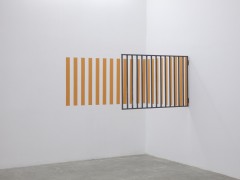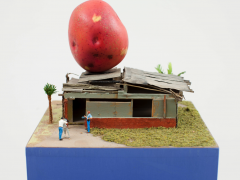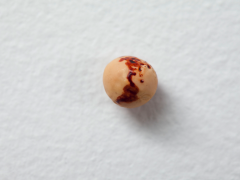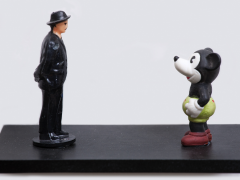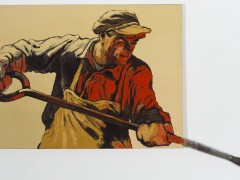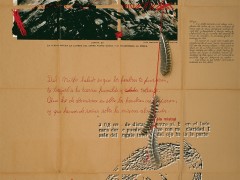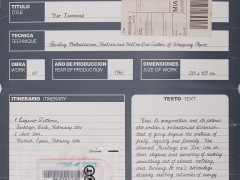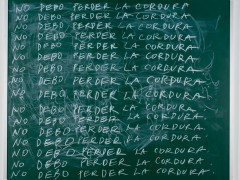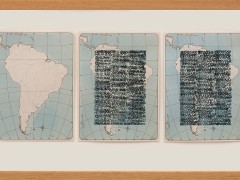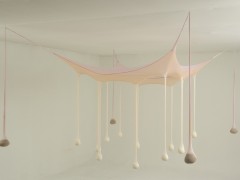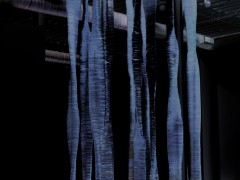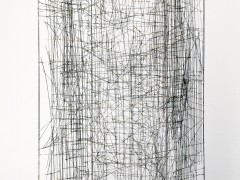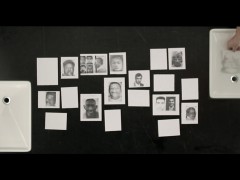Permission to be global/prácticas globales
19.03 – 13.06 / 2014
Museum of Fine Arts, Boston
The Cisneros Fontanals Art Foundation (CIFO) and the Museum of Fine Arts, Boston (MFA), join forces on the exhibition Permission To Be Global/Prácticas Globales: Latin American Art from the Ella Fontanals-Cisneros Collection, featuring contemporary works by artists from across Latin America. Drawn from the holdings of Ella Fontanals-Cisneros, founder and president of CIFO, the exhibition premieres during Art Basel Miami Beach (December 4-8, 2013) and then travels to the MFA in March of 2014. Incorporating sculpture, painting, photography, video, installation and performance art from 1960 to the present, Permission To Be Global/Prácticas Globales features 61 artists from Central and South America and the Caribbean. Together their works explore what it means “to be global,” when free and equal cultural exchange is still limited by the power dynamics of globalization. After years of underrepresentation at home and abroad, many of these artists are now leading the discourse about contemporary art’s reach across international borders, while still reflecting social and political issues at home. At CIFO, the exhibition will feature more than 80 works, while visitors to the MFA will experience 60 works in the Museum’s first-ever exhibition dedicated to contemporary Latin American art. Permission To Be Global/Prácticas Globales showcases many artists never before seen in New England, along with new installations and performances inspired by the Ella Fontanals-Cisneros Collection. Permission to be Global/Prácticas Globales is curated by the MFA’s Jen Mergel, Robert L. Beal, Enid L. Beal and Bruce A. Beal Senior Curator of Contemporary Art and Liz Munsell, Assistant Curator of Contemporary Art & MFA Programs, in consultation with Jesús Fuenmayor, Director and Chief Curator of CIFO. The exhibition will be on display at the CIFO Art Space in Miami through February 23, 2014 and on view in the Henry and Lois Foster Gallery at the MFA from March 19 through July 13, 2014.
“The MFA is grateful to Ella Fontanals-Cisneros for sharing works from her renowned collection with our audiences—she is an extraordinary woman whose foundation has been connecting audiences in the U.S and Europe with seminal art from across Latin America for over a decade,” said Malcolm Rogers, Ann and Graham Gund Director of the MFA. “This is an exciting moment, as increased attention to international contemporary art spurs artists and scholars to new heights. We hope that this collaboration will further the MFA’s efforts to represent the diverse influences of art from across all of the Americas.”
Permission To Be Global/Prácticas Globales focuses not only on the creation of art from Latin America, but also on its reception, locally and internationally. In the early 1960s, many Latin American artists’ work addressed social causes in climates of great hostility and repression by military governments that swept the region in the second half of the 20th century. And as the Cold War was fought globally, both the U.S. and U.S.S.R. vied for influence and power in Latin America. However, with the collapse of the Berlin Wall in 1989, the struggle between the two world powers abated and neo-liberal capitalism took hold. The ensuing decades saw the extreme acceleration of globalization, with contemporary artists––including those from across Latin America––creating a new brand of art that reacted to shifting international power dynamics and exposed issues that had previously not been represented on an international stage.
“Since its founding over ten years ago, CIFO has showcased Latin American art with its yearly exhibitions, promoting and representing artists from this region” said Ella Fontanals-Cisneros, founder and president of CIFO. “This year we are excited to be collaborating with the MFA on this year’s exhibition and to later present these works in Boston, bringing Latin American art to a new broader audience.”
León Ferrari illustrates the global nature of the exhibition with his La Jaula (The Cage) (1979), which he created while in exile from an oppressive regime in his native Argentina. Ferrari’s imagined cage works as a metaphorical prison cell for the military officers who tortured and executed thousands, including his son, during Argentina’s “Dirty War” in the 1970s. Ferrari’s use of abstraction to speak to political issues has been extremely influential for upcoming generations of artists. Emerging Cuban artist Wilfredo Prieto parodies the “smallness” of the global world in Untitled (Globe of the World) (2002), which inks the seven continents onto a tiny dried pea—a gesture that reduces the massive idea of globalism onto a food many Cubans have grown tired of. In her sculpture Dialogue with Him (1998), Argentinean born, U.S.-based artist Liliana Porter displays a familiar figurine of Mickey Mouse in a faceoff with José Gregorio Hernández, the legendary Venezuelan doctor memorialized in public monuments and mementos for his saintly healing powers. Both figurines are symbols of differing belief systems that coexist in a globalized world.
As many artists became part of the larger global network, they were no longer able to identify with their culture alone––this left many asking what it means to be Latin American. Brazilian art legend Nelson Leirner illustrates this idea through his work Untitled (from the series Assim é… se lhe parece… (Right You Are if You Think You Are)) (2003). Leirner uses cartoons to interrogate the relationship between North and South America by pairing two maps of the continents collaged with stickers of Day of the Dead (a traditional Mexican holiday), dancing skeletons and Mickey and Minnie Mouse. The accumulation of skeletons evoke the dead, and perhaps the “disappeared” victims of repression in Latin America, while the grinning characters of Disney threaten an impending homogenous culture. Cuban-born artist Ana Mendieta’s self-portrait Untitled (1975), morphs her human form into an abstraction of a childhood memory, before her 1961 departure from Cuba as part of the Peter Pan Operation that brought Cuban children to the U.S. While she could no longer physically visit her homeland, the geometries of her recording revisit her roots.
“Since the mid-20th century until now there has been an increased interest in Latin American art production, but it has been only during the last 10 years that the presence of artists from Latin America has become widespread in every single important international event including biennials, museums and private collections, magazines and galleries,” said Jesús Fuenmayor, CIFO Director and Chief Curator. “For CIFO, this is our most ambitious exhibition project to date in contributing to the promotion and knowledge of the art of this region.”
Permission To Be Global/Prácticas Globales is organized into four sections: “Power Parodied,” “Borders Redefined,” “Occupied Geometries” and “Absence Accumulated.” Through these themes, the exhibition considers artists’ distinct strategies for communication in both local and international contexts. Their unique visual languages undermine the status quo, defy boundaries, humanize art’s abstractions and revisit forgotten histories. Together, they offer an alternative understanding of what it means “to be global” today.
This post is also available in: Spanish

 Home
Home
